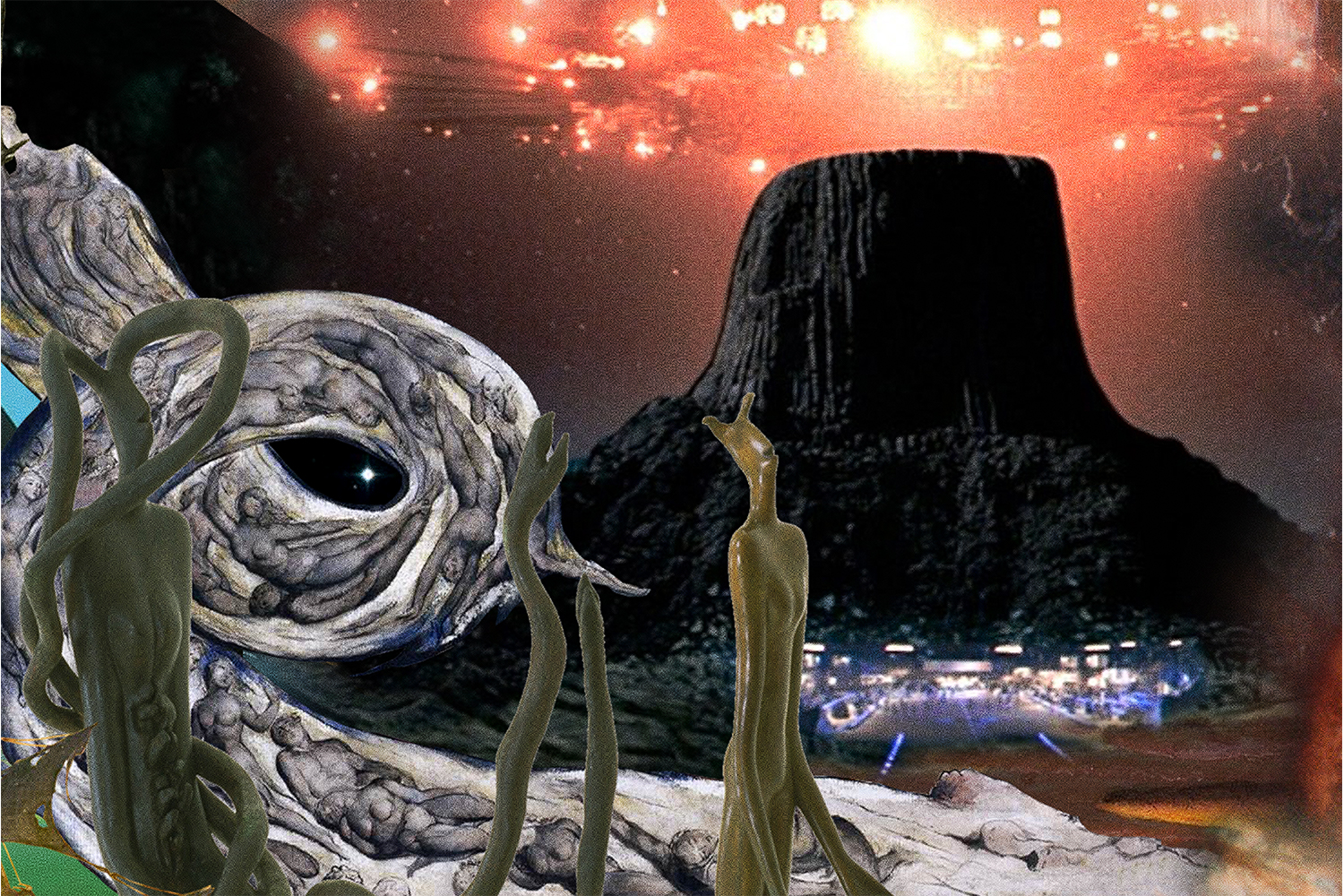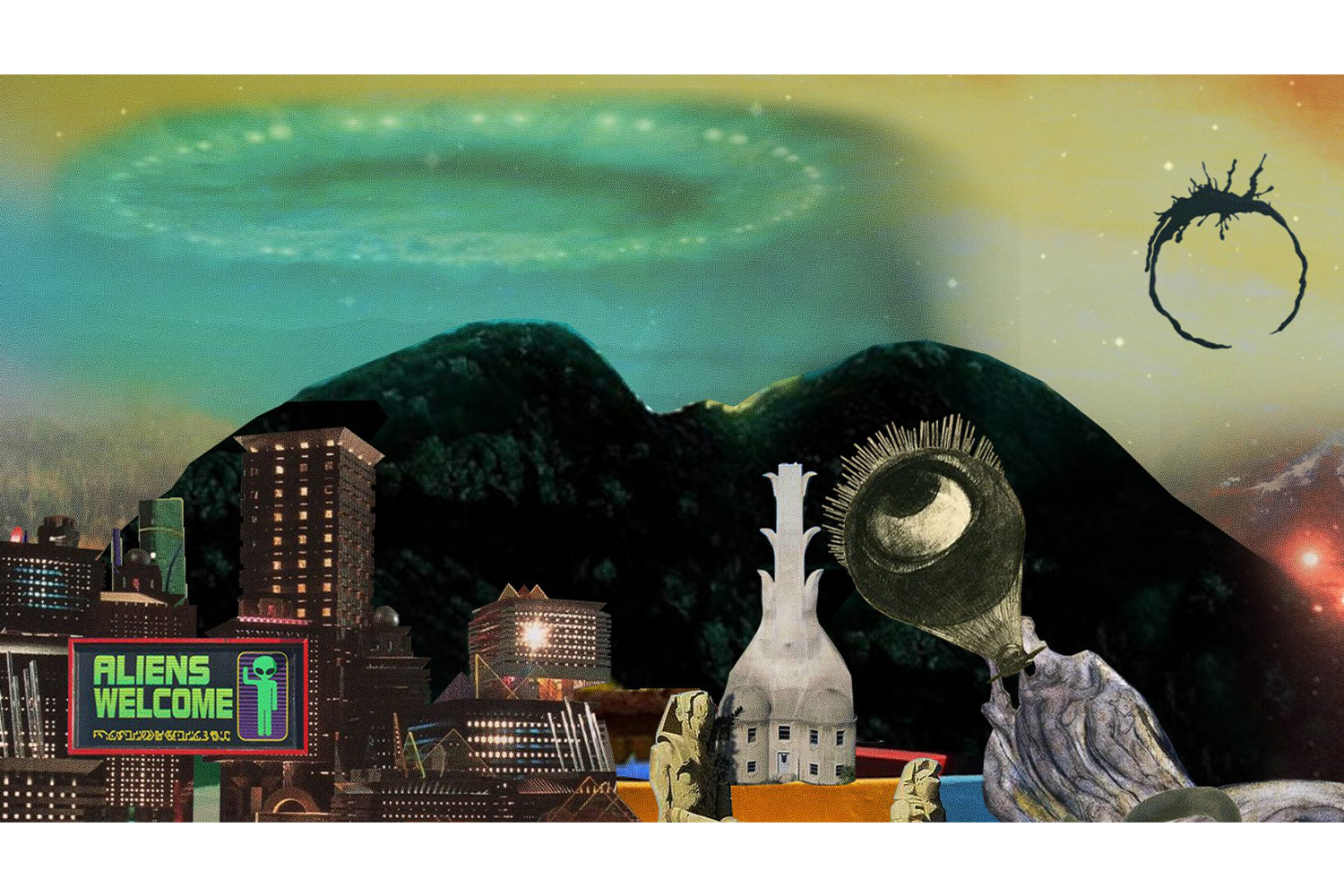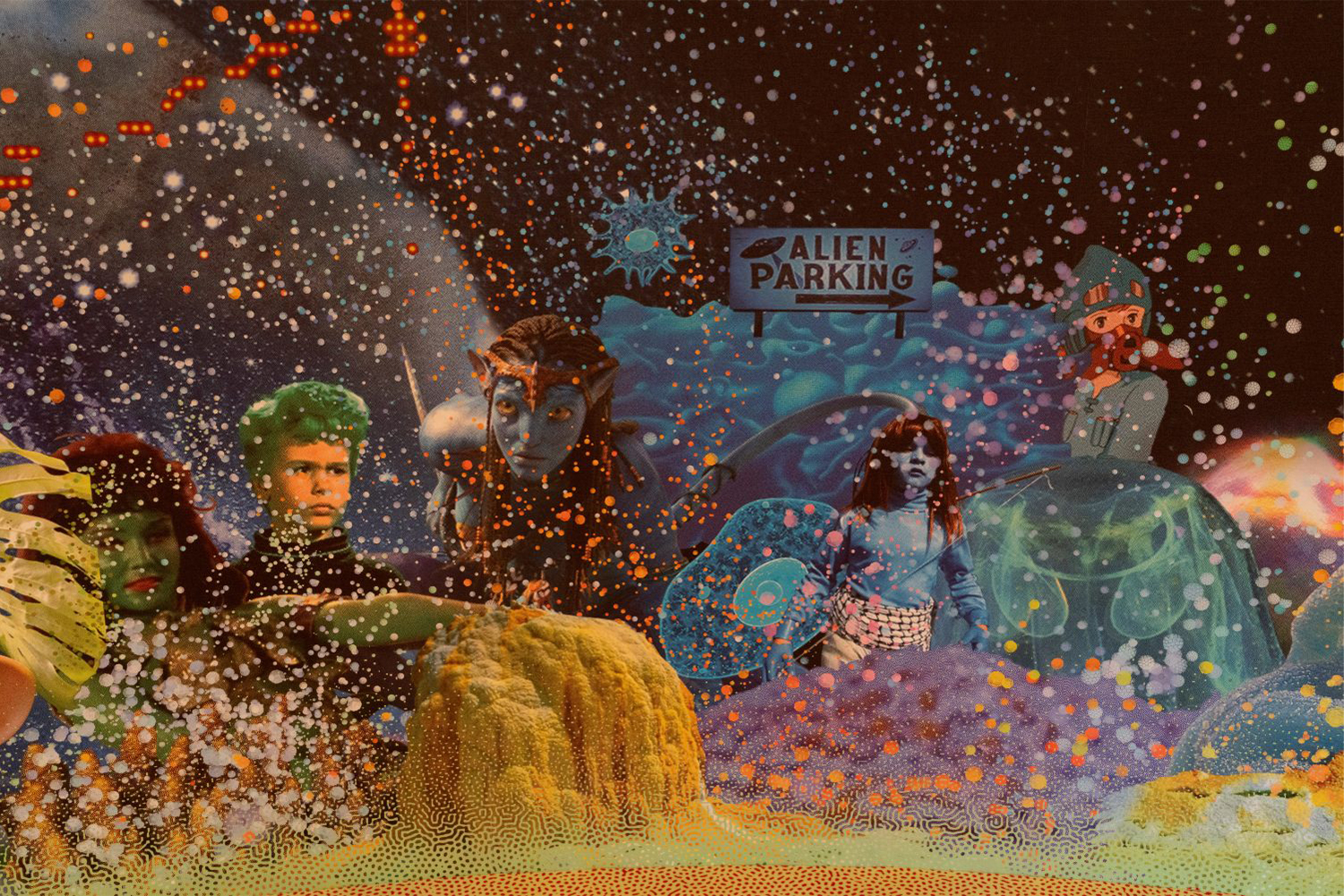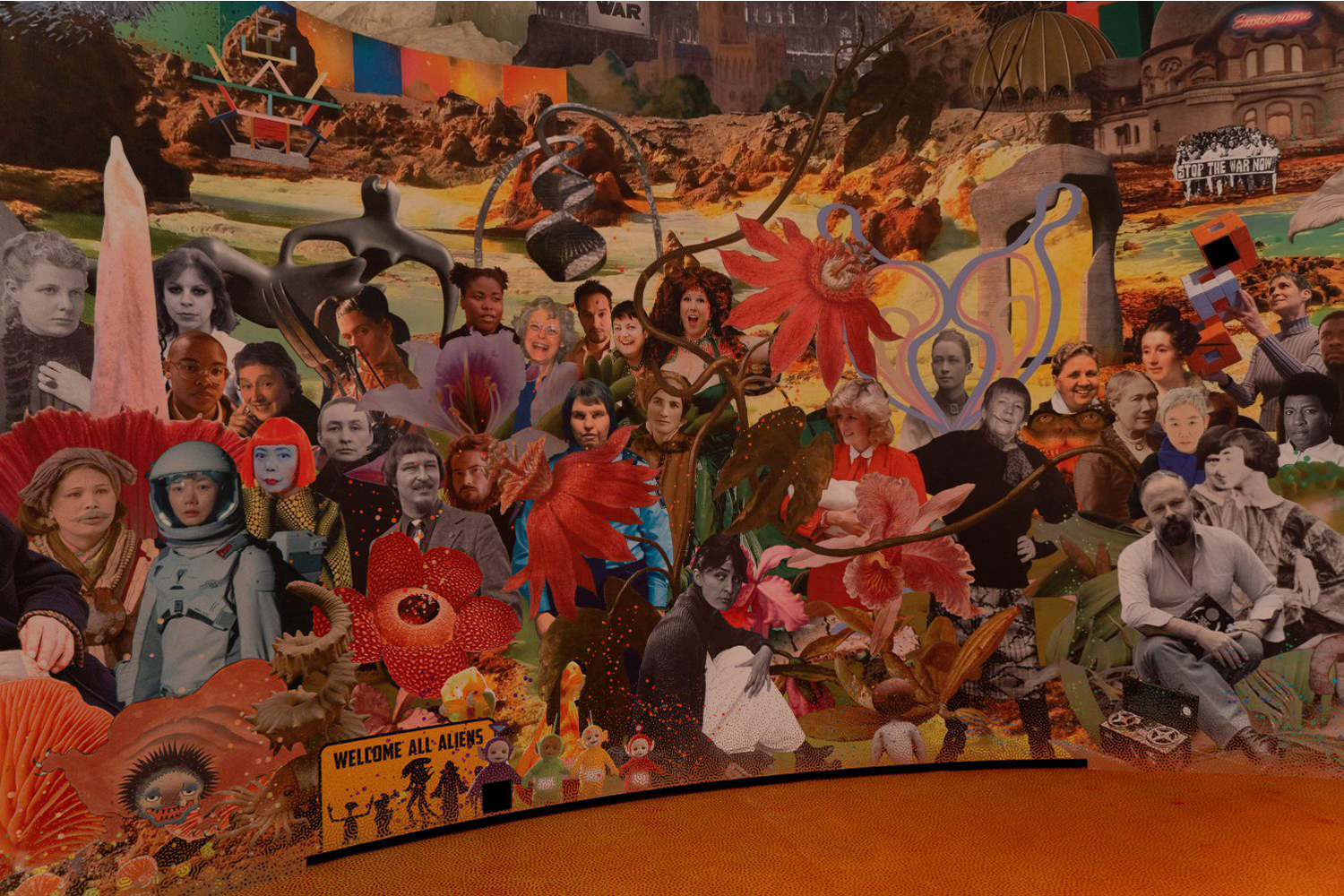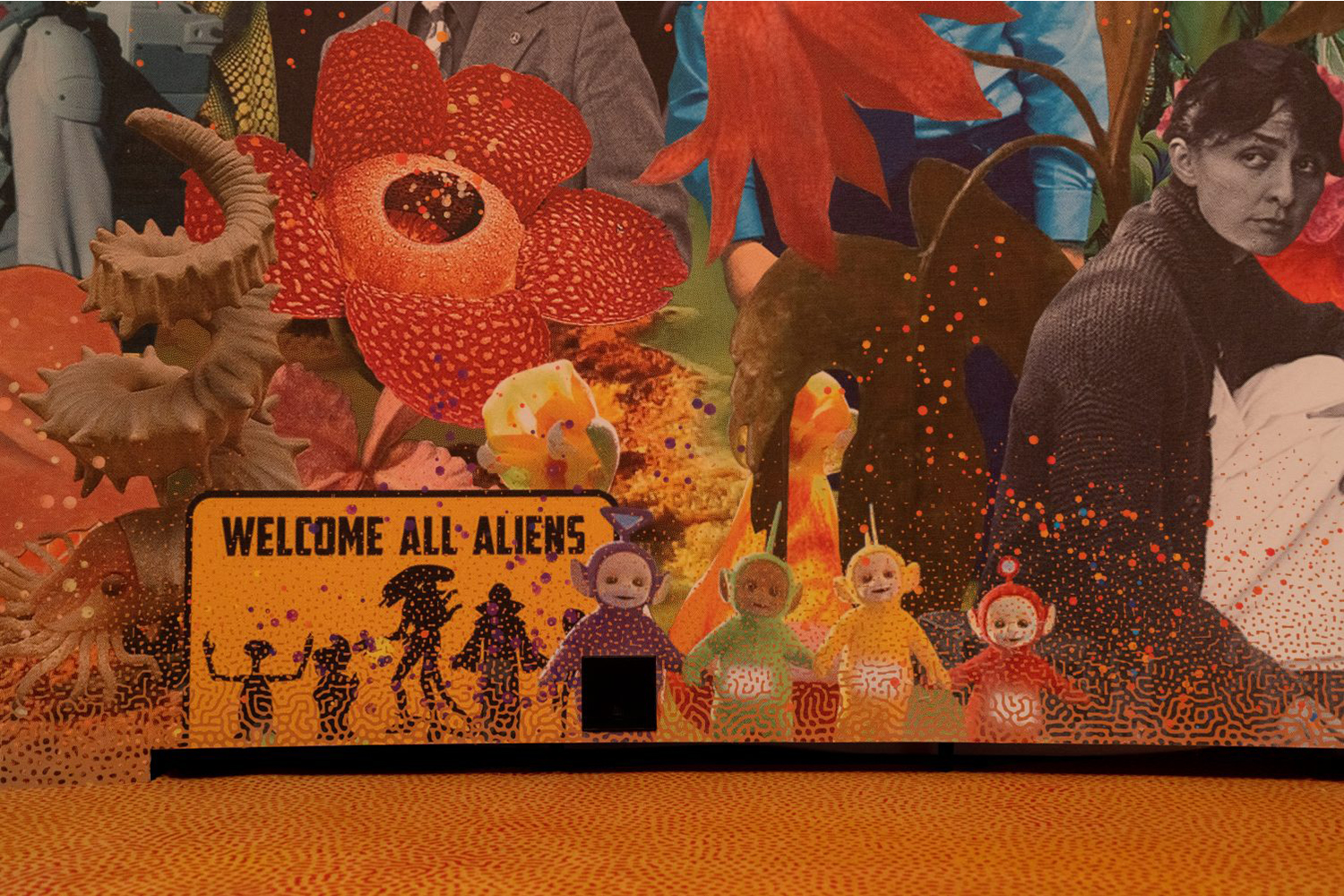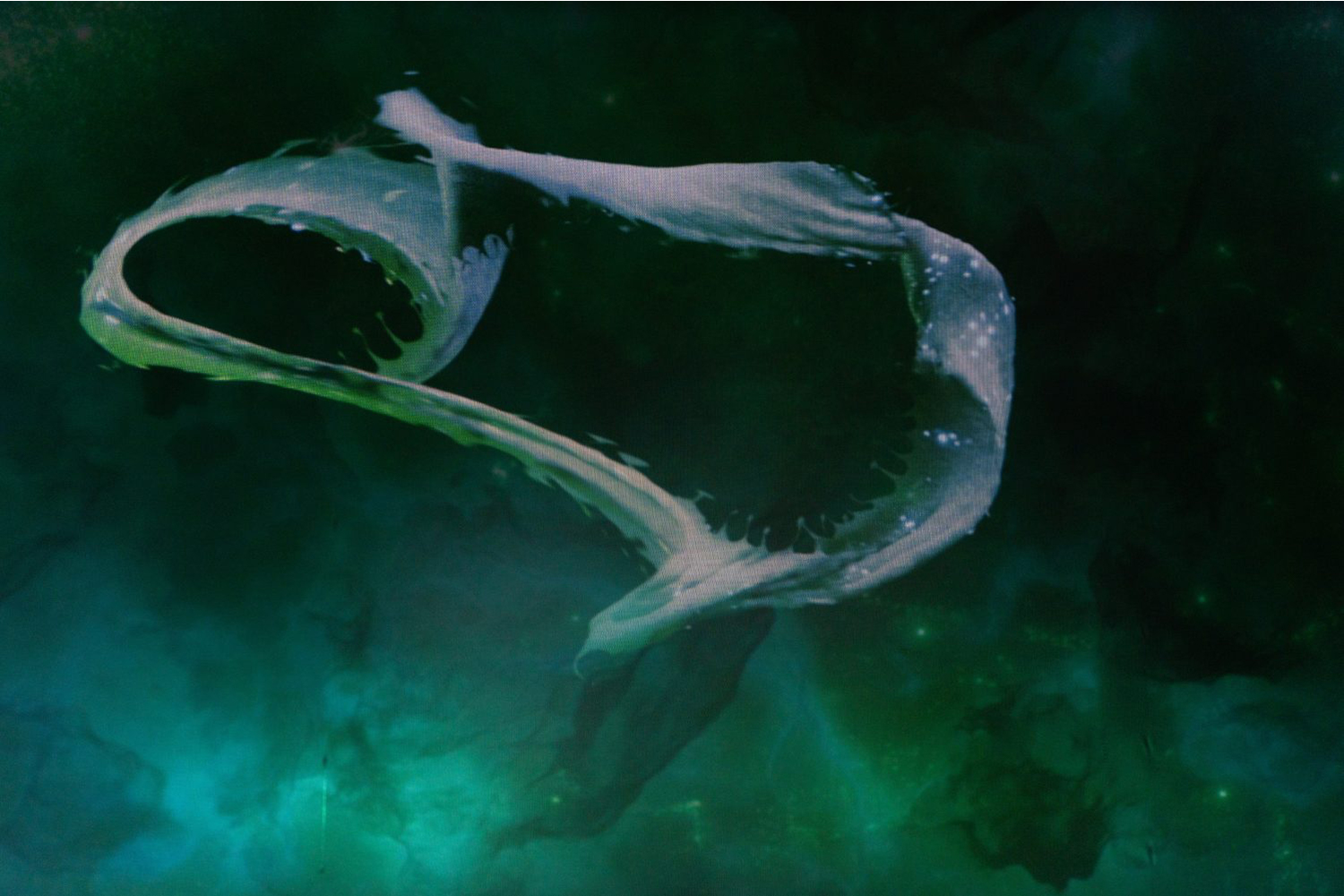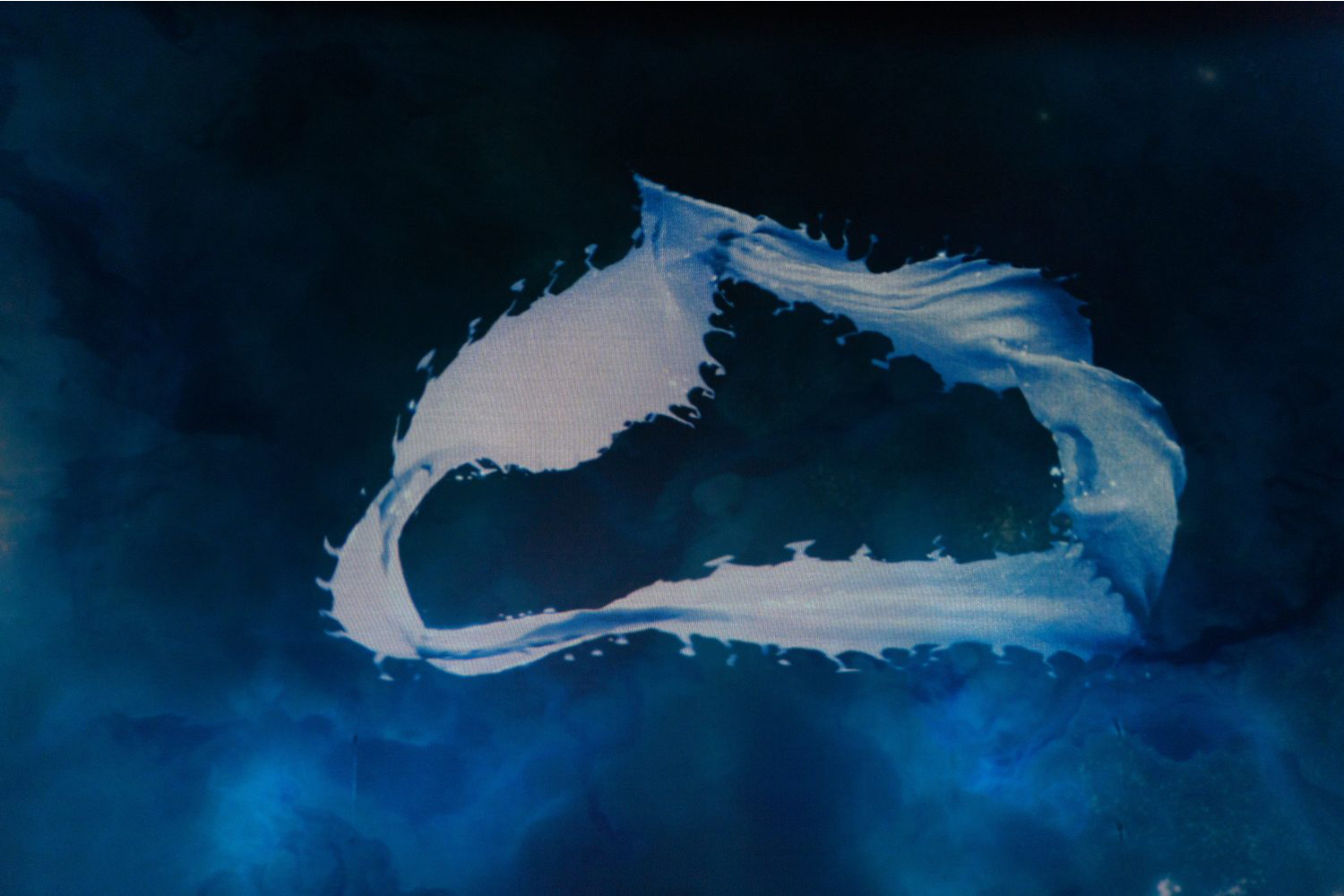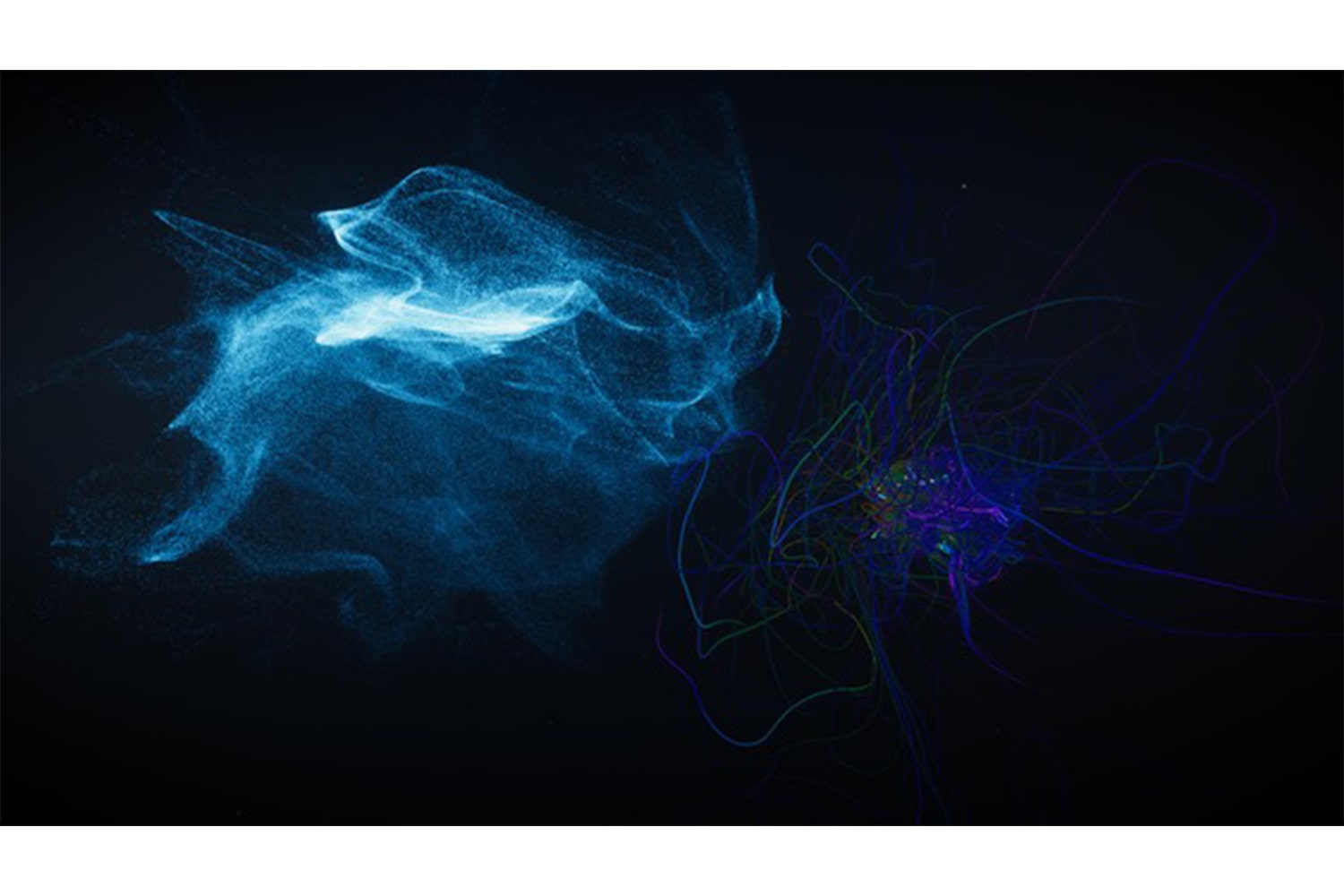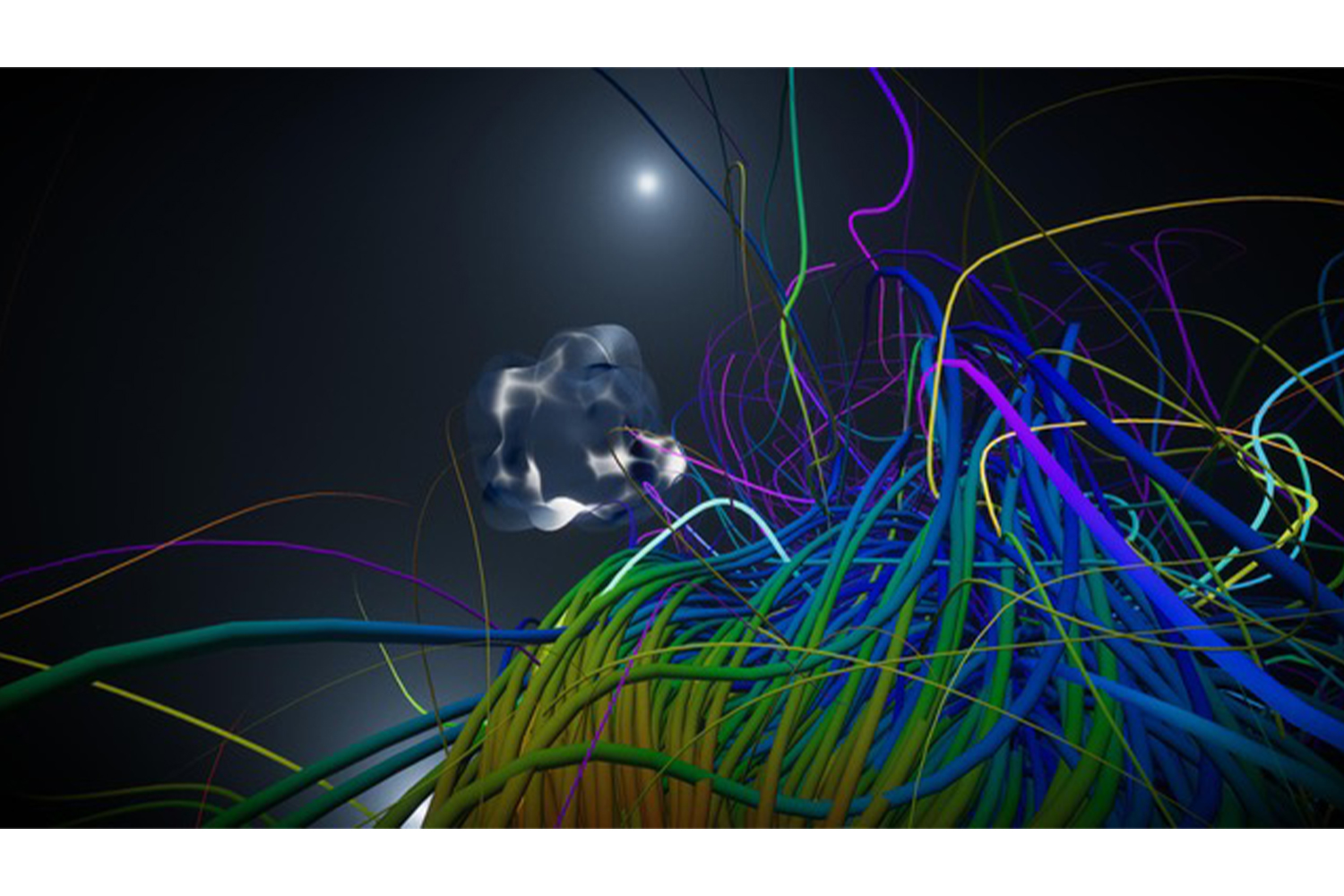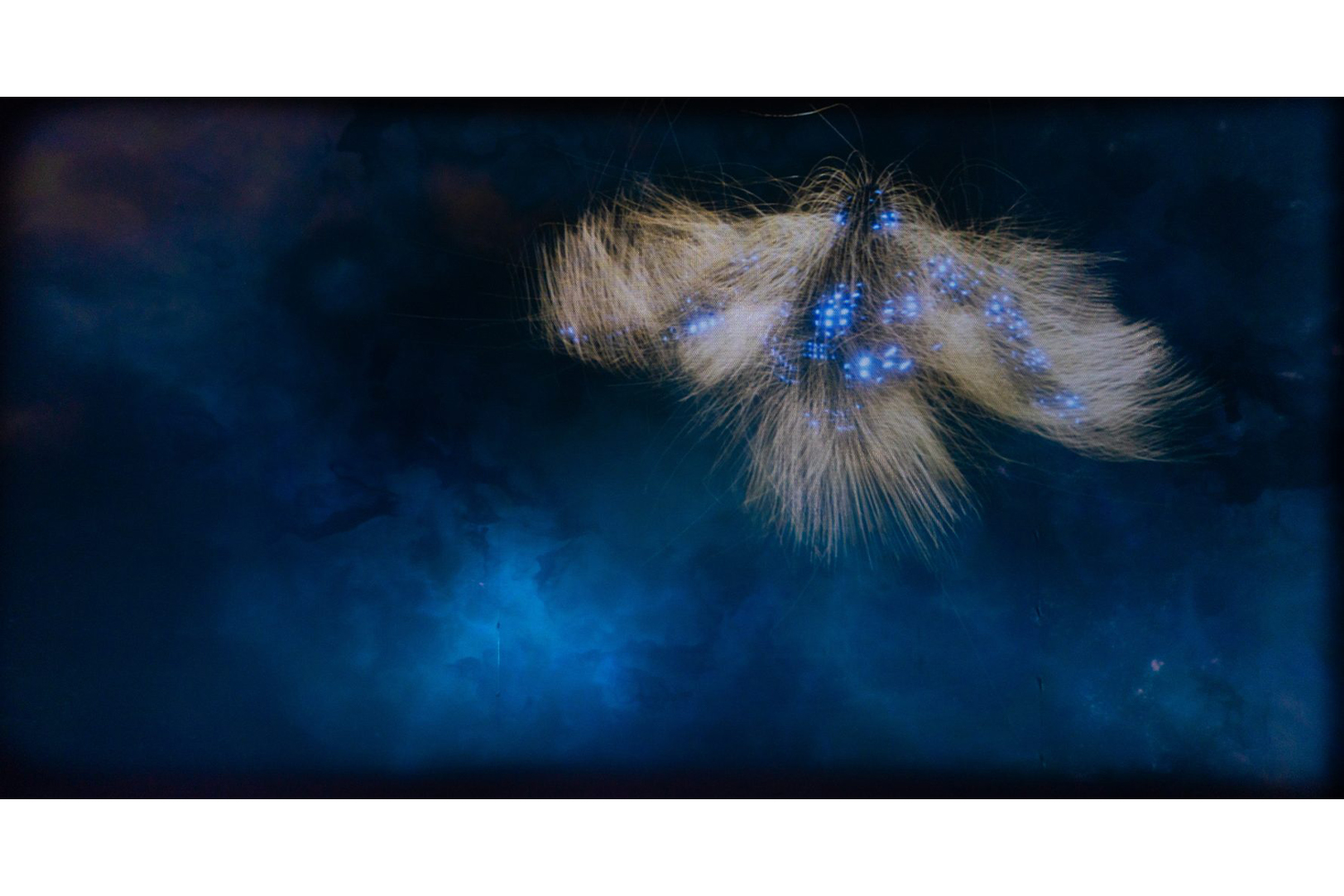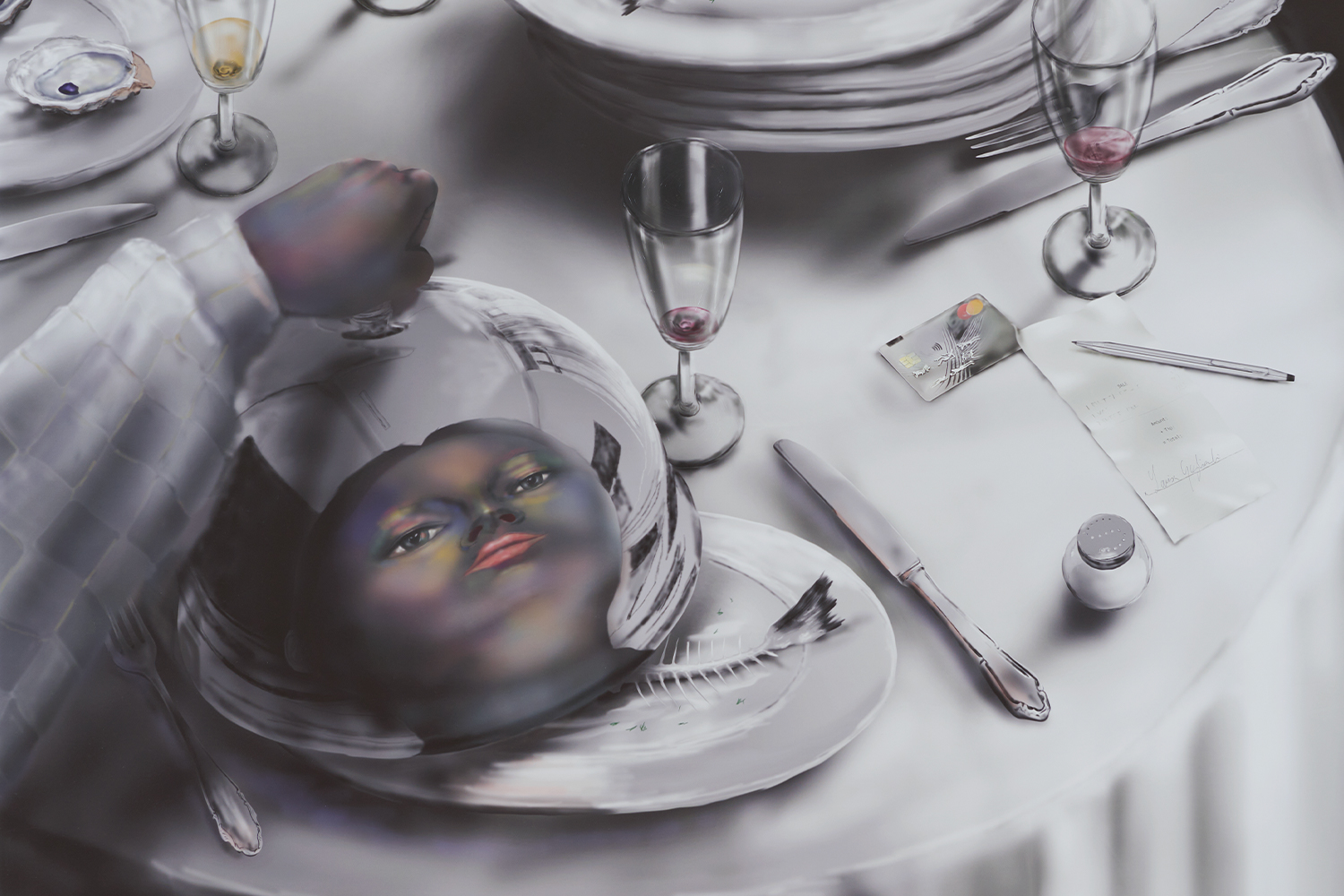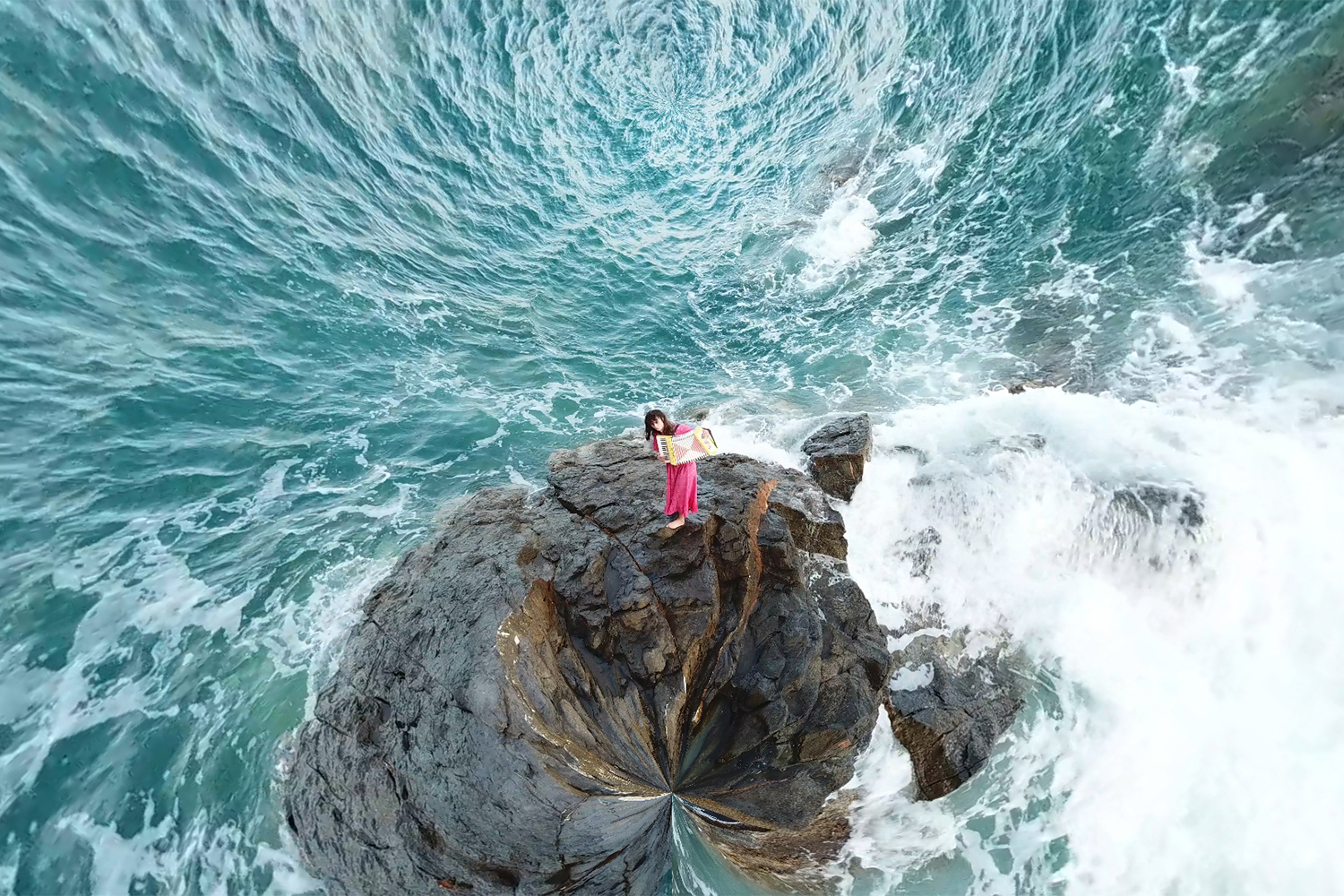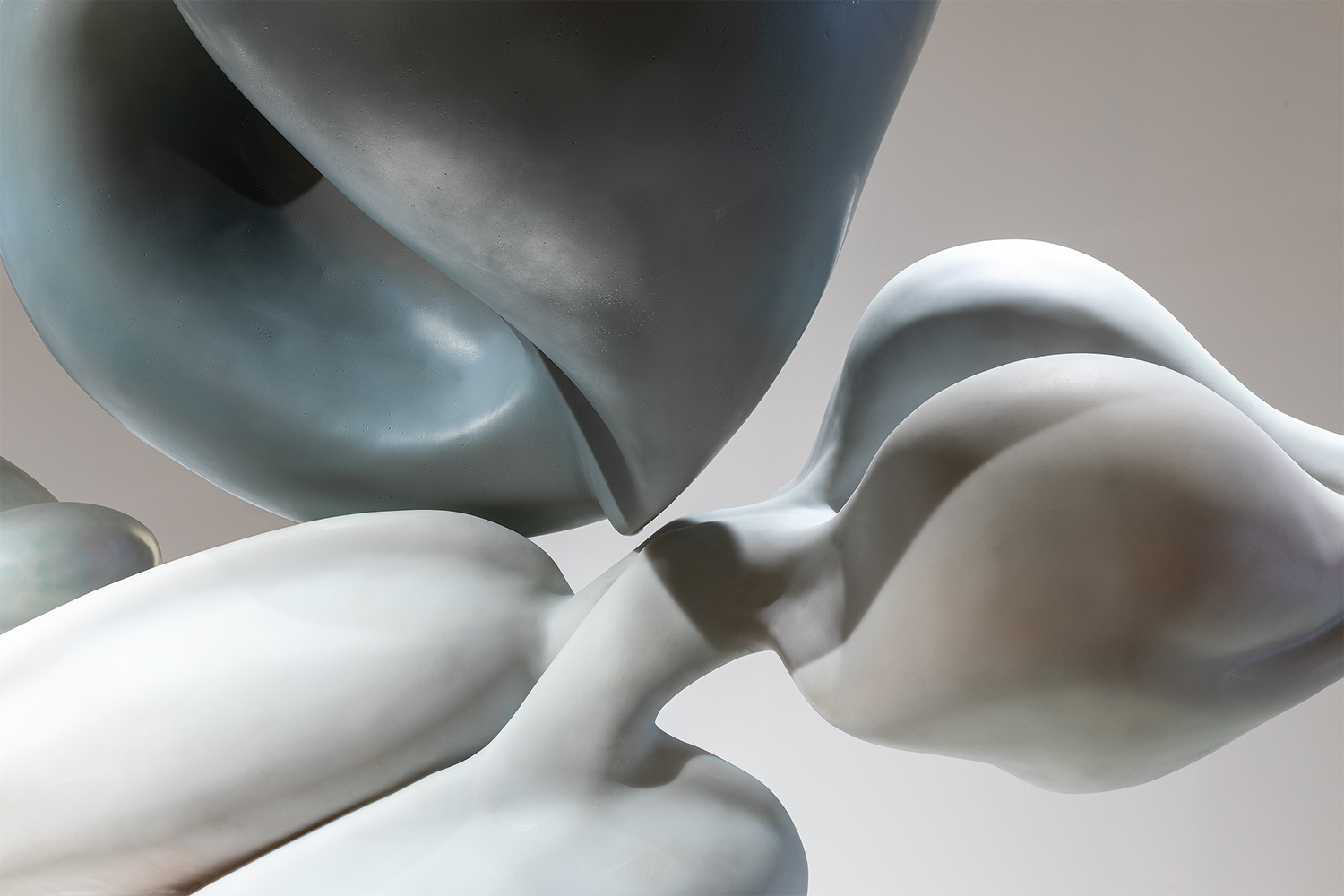Dominique Gonzalez-Foerster wants to know: “What if aliens were in love with us?” Influenced by her research into extraterrestrial life, the interior arrangement of the Serpentine has been altered to encourage and facilitate visits from these deep-space travelers. With the word “alienarium” suggestive of other enclosed, observational spaces — planetarium, vivarium, terrarium, aquarium, etc. — this linguistic denotation of place (arium) also refers to the specific history of the South Gallery as a social destination, originally designed and built as a teahouse in 1934 by the architect James Grey West. The desire to stage a landscape of potential encounters reverberates throughout the various methods of visual representation deployed in the show, including peepholes, virtual reality, holograms, and the panoramic image.
As a way of holding these disparate elements together, through a literal form of grounding or earthing, the entire gallery floor has been carpeted with Planet Carpet (Uranus) (2022), an enlarged textile rendering of the planet Uranus, abstracted into pixelated patches of pink, purple, aqua, yellow, and orange, with its smudged, saturated details akin to coffee ring stains. A singular aroma has also been diffused throughout the building, with Gonzalez-Foerster developing the arboraceous Alienflowers (2022) scent with parfumier Barnabé Fillion.
In contrast to La planète close (vision) (2021), a surreal sculpture comprised of overgrown auburn tresses, which can only be viewed through a covert peephole, the exhibition’s central chamber is dedicated to the 360-degree installation Metapanorama (2022). The collaged image spans the entire rotunda. Centuries of artists, filmmakers, writers, and musicians are seamlessly merged alongside a backdrop of architectural sites and wonders, with flowers, marine plants, fungi, scientific models, spaceships, and artworks floating in the cosmos behind. The image is reproduced on double-sided sheets of A3 paper, providing visitors with a key to the 195 elements in the assemblage. There is Emilio Pucci’s 1965 ski mask, the Teletubbies, E.T., planet Mars, and Princess Diana. Lee Bul and Gustav Metzger. Yayoi Kusama and Joseph Cornell in 1971. Annie Sprinkle and Beth Stephens in 2017. Precious Okoyomon, Arca, and Eartheater. Artworks by William Blake, Henry Moore, Richard Hamilton, Emma Kunz, Hilma af Klint, Suzanne Treister, Odilon Redon, and Nobuyoshi Araki. David Bowie in The Man Who Fell to Earth (1976) and Lupita Nyong’o in Black Panther (2018). There are atoms, triffids, blood vessels, and crystals. Self-referential in nature (it is a meta panorama), the steel sculpture which stands outside the gallery, Alienor – in remembrance of the coming alien (2022), made in collaboration with Paul B. Preciado, can also be found, alongside an image of the neon text sign which hangs in the exhibition’s foyer. The book-shaped pillows on the floor offer a science-fiction reading list in the form of soft sculpture, and include texts written by Philip K. Dick, Ursula K. Le Guin, and Octavia E. Butler.
The visual spectacle of the panorama was invented in the early 1790s. Like today’s augmented or virtual reality, it created the illusion that the spectator was directly inhabiting the center of the image itself, with the painted dioramas transporting them to scenes from history or far-flung cities. Individuals were often so overwhelmed that they fainted or vomited. In Alienarium (2022), Gonzalez-Foerster has created a multi-
user VR experience in which one can encounter five extraterrestrial beings. Situated within a serene, celestial galaxy, multicolored tubular structures cascade below, a shoal of white fish float past, and an ethereal atmosphere of pink, iridescent mist envelopes everything and then slowly drifts away.
Holorama 5 (LoieFullerforever) (2022), a fourteen-minute durational holographic illusion, can only be viewed from outside the gallery. Peering through unfrosted panes of glass in the French doors, an alien apparition morphs from a semi-figurative dancer into odd and stretched molecular structures, appearing like milk or straw. The visuals are accompanied by a bassy, flamenco-inflected soundtrack by Julien Perez. The projection is a perfect homage to the labyrinthine “serpentine” dances performed by Loie Fuller in the early 1900s, in which she commanded undulating fabric and specialized stage lighting to dissolve her bodily shape and transform into butterflies, snakes, and ocean waves. The alternative reality of the “Alienarium 5” offers a similar blurring of images and references, an endlessly shapeshifting vision. Gonzalez-Foerster’s reconfiguring of existing images illustrates a poetic desire to reconfigure the world, shown here as a vital planet of limitless creative production and pioneering research, one that an alien would be a fool not to love.

